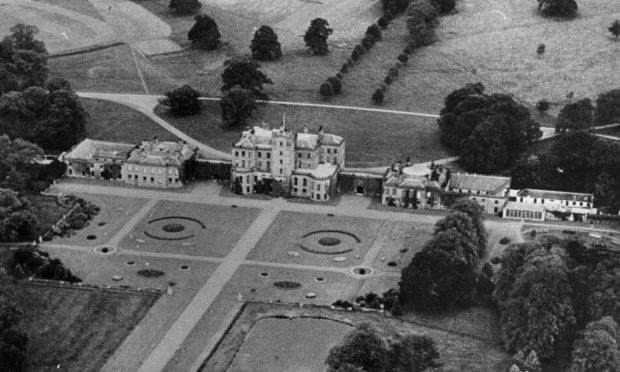The grandiose Gordon Castle by Fochabers has a proud history dating back as far as the reign of Robert the Bruce in the 14th Century.
One of many strongholds of the powerful and influential Clan Gordon, whose estate once covered an area from the Moray Firth to Ben Nevis, the original Gordon Castle was a fortress.
Built for defence, it was not until the 1700s that the 4th Duke of Gordon transformed Gordon Castle into a palatial and comfortable country pile to rival the Palace of Versailles.
The “bonie” castle also captured the imagination of Robert Burns who was inspired to write ‘Castle Gordon’.
Join us as we take a look back at some archive photos of one of Speyside’s most stunning attractions.
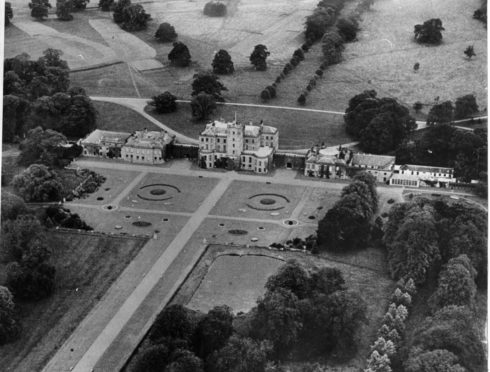
This aerial photo from 1943 shows Gordon Castle spread out in all of its splendor as envisaged by Scottish architect John Baxter.
Baxter designed the larger mansion to incorporate the original Bog o’Gight tower which the second Earl of Huntly built at the end of the 15th Century.
The base of the tower up to a height of about 14ft is believed to date from the 12th Century.
Baxter’s creation saw the addition of a four-storey central block linked to commodious wings by low galleries, flanked by single-storey pavilions, making it one of the biggest buildings in Scotland at the time.

The formal gardens in front of Gordon Castle, pictured here in the early 20th Century, were tended by a team of dozens of gardeners, along with the walled garden.
The colourful gardens became a backdrop for fetes and events hosted by the Duke of Gordon and Richmond.
The castle’s “beautiful policies” were described in the Press and Journal in the 1910s as “a wealth of colour” in “neat and well-kept gardens” with a “profusion of fruit in well-appointed hot houses”.
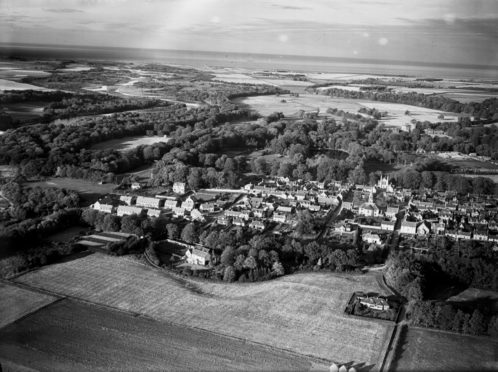
But Gordon Castle and its gardens, seen in the background of this shot from 1948, took on a less frivolous role as the First World War broke out in 1914.
The castle became a military hospital where many Gordon and Seaforth Highlanders were treated and convalesced from injuries received in France.
Few families were untouched by the horrors of war, and the Duke was no exception, his youngest son Lord Bernard Gordon Lennox was killed at Ypres in 1914.
The castle and its gardens played an important part in rehabilitating soldiers, providing Red Cross nursing and entertainments.
In 1919 when the last patient left the hospital, the Duke reflected back on his deep desire to provide comfort for the “sturdy, brave and insistent” troops in his care, while also fundraising for those on the frontline.
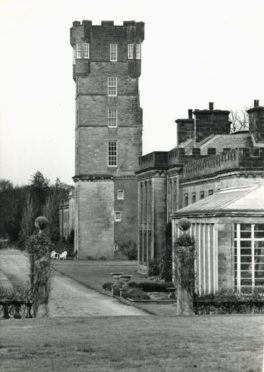
The war took its toll on the house along with double death duties following the deaths of the 7th and 8th Dukes of Gordon and Richmond.
Ninth Duke Freddie later had to make the difficult decision to part with the estate.
When war broke out again, the house was occupied by troops as barracks, falling further into disrepair through neglect and harsh winters.
Around 1950, the estate was bought back from the Crown Estate by Sir George Gordon Lennox, the grandson of Bernard who was killed at Ypres.
He saved the east wing and old tower, but the entire central block was beyond repair and demolished in 1953.
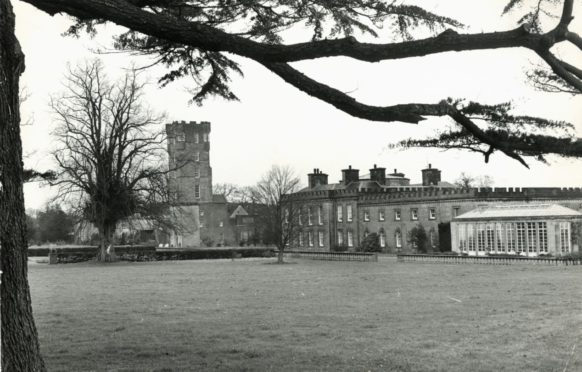
The above photo shows the much reduced, but still substantial Gordon Castle as it looked in 1975 after it had been turned into a more modest family home.
Gone were the formal gardens which once hosted the famous philanthropic fetes that brought the Fochabers community into the grounds.
The walled garden was turned over to commercial raspberry growing before becoming disused entirely in the 1980s.
But over the last decade, the family has been carefully restoring the gardens to their former glory as imagined by their Georgian forebears.
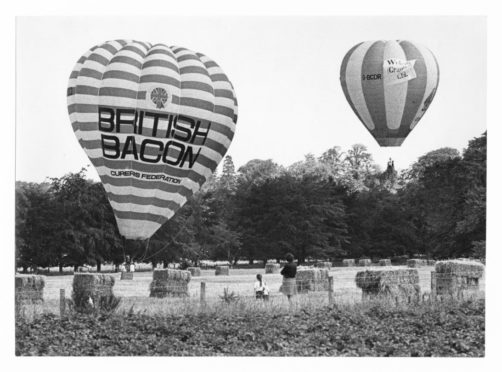
This photo from 1976 shows hot air balloons taking off from the gardens of Gordon Castle during a balloon meet in 1976.
As well as replanting the gardens, the family also brought back events at the castle including the famous Gordon Castle Highland Games which returned in 2011.
Regularly attracting crowds of tens of thousands of people in the early 20th Century, the games sadly came to an end during the interwar years.
The games and country fair are now a popular event on the calendar attracting competitors and visitors from across Scotland, and are scheduled to return next year after an absence due to Covid.
See more like this:
